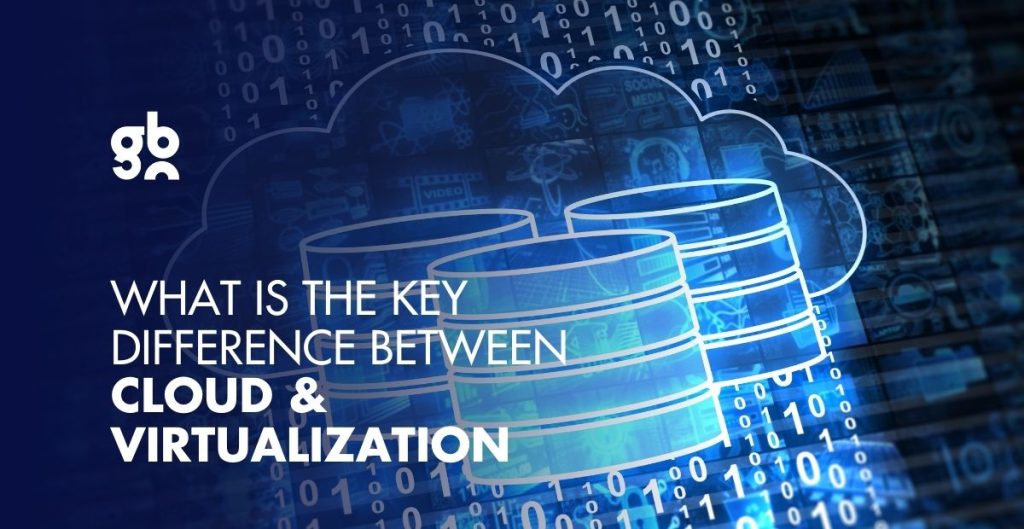What is the key difference between cloud and virtualization
The digital landscape is rapidly evolving, with cloud and virtualization standing at the forefront of this transformation.

The digital landscape is rapidly evolving, with cloud computing and virtualization standing at the forefront of this transformation. Both technologies have revolutionized how businesses operate, offering scalable solutions and cost savings. As companies strive to stay competitive, understanding the nuances of cloud and virtualization becomes crucial.
This blog post delves into the intricacies of these technologies, highlighting their differences, uses, and the value they bring to organizations. With insights from reliable sources, this guide aims to equip you with a comprehensive understanding of cloud and virtualization.
Virtualization Vs Cloud Computing: How To Easily Differentiate Both
Virtualization and cloud computing are two pivotal concepts in modern technology, yet they are often misunderstood or conflated. Understanding the distinction between them is crucial for businesses and individuals alike, especially when deciding on technology solutions that best suit their needs.
What is Virtualization?
Virtualization is a technology that allows you to create multiple simulated environments or dedicated resources from a single, physical hardware system. Essentially, it enables one machine to do the work of many by sharing its resources across different environments.
This is achieved through a layer of software known as a hypervisor, which separates the physical hardware from the operating systems, allowing each environment to operate independently.
There are various types of virtualization, including server, desktop, and application virtualization, each serving specific purposes. For instance, server virtualization is common in data centers, where it helps to optimize the use of server resources and reduce costs by running several virtual servers on a single physical server.
Distinguishing Virtualization from Cloud Computing:
While virtualization refers to the technology of creating multiple simulated environments from one physical hardware system, cloud computing is a model that delivers computing resources over the internet. Cloud computing relies heavily on virtualization to provide these resources efficiently, but it encompasses much more.
Cloud computing is divided into three primary service models: Infrastructure as a Service (IaaS), Platform as a Service (PaaS), and Software as a Service (SaaS). These models provide various levels of management and flexibility, catering to different business needs.
- Infrastructure as a Service (IaaS): Offers virtualized computing resources over the internet, such as virtual machines, storage, and networks. It gives users a high level of control over the infrastructure.
- Platform as a Service (PaaS): Provides a platform allowing customers to develop, run, and manage applications without worrying about the underlying infrastructure.
- Software as a Service (SaaS): Delivers software applications over the internet on a subscription basis, eliminating the need for local installation and maintenance.
Key Differences:
- Purpose and Use: Virtualization is focused on creating virtual environments on a physical machine, while cloud computing is about delivering services like storage, computing power, and applications over the internet.
- Deployment: Virtualization typically occurs within a data center or on-premises environment, whereas cloud computing is hosted off-site by a cloud provider.
- Scalability: Cloud computing offers almost infinite scalability and flexibility due to its pay-as-you-go model and vast resource pool. Virtualization, while offering resource efficiency, is limited by the physical hardware capacity.
In summary, virtualization is a foundational technology that enables cloud computing, but cloud computing extends beyond to provide a wide array of services over the internet. Understanding these differences helps organizations make informed decisions about their IT strategies and investments.
Use Cases and Examples of Virtualization
Virtualization is widely used in various scenarios:
- Server Consolidation: Reducing the number of physical servers by hosting multiple virtual servers on a single machine.
- Disaster Recovery: Quickly restoring systems using virtual backups.
- Testing and Development: Creating isolated environments for software testing and development without affecting the main system.
What is Cloud Computing?
Cloud computing is a service delivery model that provides on-demand access to computing resources over the internet. It enables businesses to access IT resources without owning the infrastructure, offering flexibility and scalability.
Cloud Computing Characteristics
- On-Demand Self-Service: Users can automatically provision computing resources as needed.
- Broad Network Access: Services are accessible from any location with internet connectivity.
- Resource Pooling: Resources are pooled to serve multiple consumers using a multi-tenant model.
- Rapid Elasticity: Resources can be elastically provisioned and released to scale rapidly.
- Measured Service: Usage is monitored, controlled, and reported for transparency and optimization.
Virtualization vs. Cloud Computing
| Feature | Virtualization | Cloud Computing |
| Core Functionality | Creates virtual versions of physical components | Delivers shared computing resources over the internet |
| Resource Allocation | Static allocation within a single machine | Dynamic allocation from a pool of resources |
| Management | Requires manual setup and management | Automated resource management |
| Scalability | Limited to physical machine capacity | Virtually unlimited scalability |
| Cost | Requires upfront investment in hardware | Pay-as-you-go pricing model |
Get the Best of Virtualization & Cloud Computing with GBG Cloud
Transitioning to the cloud or implementing virtualization can significantly enhance your business operations.
As a Microsoft specialized partner, GBG Cloud offers tailored Azure services in Egypt and Saudi Arabia, ensuring you leverage the best of both technologies. Whether you're looking to optimize resources with virtualization or expand your capabilities through cloud solutions, GBG Cloud provides expert guidance and support every step of the way.
Explore our services and transform your IT infrastructure with GBG Cloud. Visit our website to learn more about how we can help your business thrive in the digital age.
Explore how GBG Cloud can streamline your IT infrastructure with cutting-edge cloud and virtualization solutions. Reach out to our team today and discover the future of digital transformation.
FAQs
What are the different types of cloud computing?
Cloud computing can be categorized into:
- Infrastructure as a Service (IaaS): Provides virtualized computing resources over the internet.
- Platform as a Service (PaaS): Offers a platform allowing customers to develop, run, and manage applications.
- Software as a Service (SaaS): Delivers software applications over the internet, on a subscription basis.
Are virtualization and cloud computing services automated solutions?
While virtualization itself often requires manual setup and management, cloud computing services are typically automated. Cloud providers offer automated provisioning, scaling, and management of resources, allowing businesses to focus on their core activities.

Need a bespoke IT solution for your business?
Start a complimentary and obligation-free 30-minute consultation with our business development engineers. Together, we’ll design an IT solution that suits your business operations and scale.

